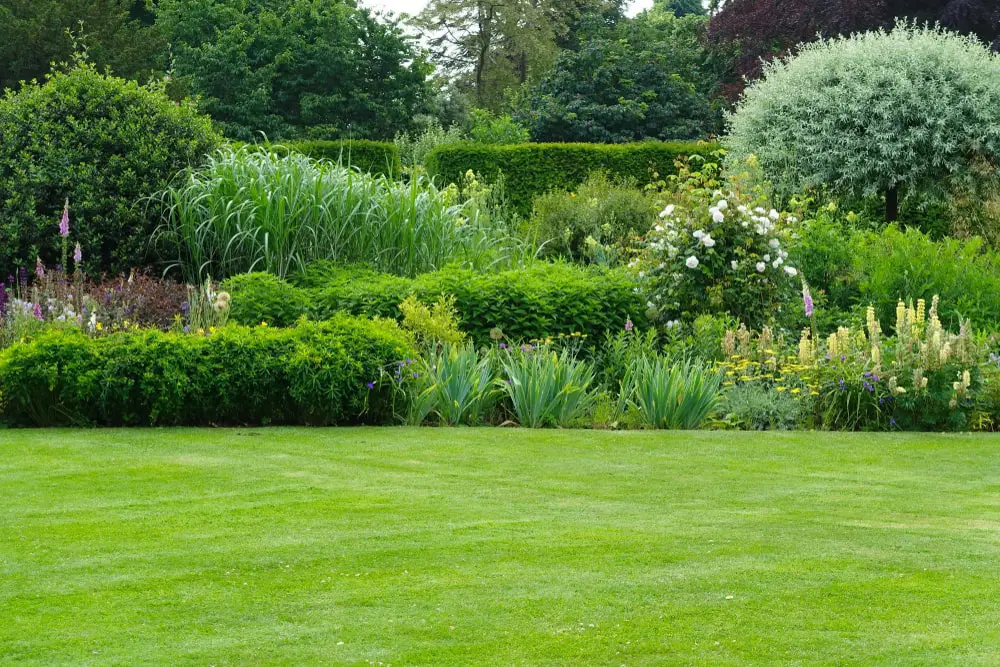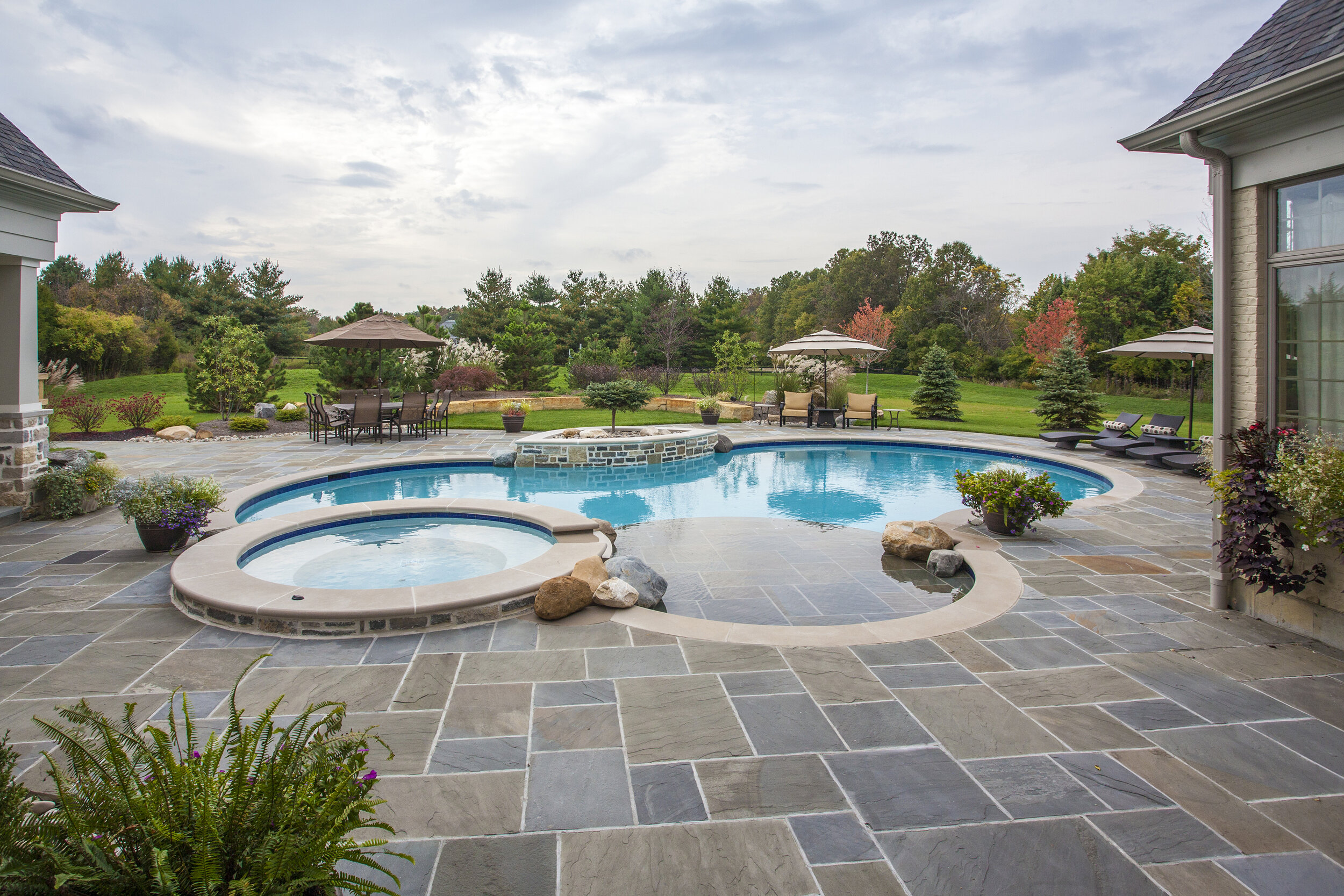Thrill Your Clients with Top Notch Commercial Landscaping Layouts
Thrill Your Clients with Top Notch Commercial Landscaping Layouts
Blog Article
Discover Numerous Types of Landscape Design That Can Change Your Outside Room
Landscape design serves as a vital element in enhancing exterior rooms, supplying numerous designs that cater to aesthetic and practical needs. Additionally, sustainable practices and exterior living spaces contribute to both environmental stewardship and way of life enhancement.
Conventional Garden Landscape Design
Standard garden landscaping symbolizes timeless elegance and a feeling of order, often identified by balanced styles and classic plant selections. This style generally emphasizes organized formats, including geometric patterns and carefully manicured bushes that create a harmonious visual balance (Landscape). Paths and sidewalks, usually lined with rock or block, guide visitors via the yard, boosting the total visual

Water features, such as fountains or decorative fish ponds, play a significant function in standard landscape design, offering a tranquil focal point and boosting the sensory experience. Additionally, traditional yard ornaments, consisting of sculptures and urns, add to the fine-tuned ambience.
Ultimately, traditional garden landscape design is a party of nature's beauty with a well-ordered, visually pleasing layout, inviting relaxation and reflection while recognizing historic gardening methods. This approach produces an inviting outside area that mirrors both design and class.
Modern Hardscape Layouts
Modern hardscape makes mark a departure from the structured aesthetic appeal of standard landscaping, focusing instead on cutting-edge materials and tidy lines. This modern strategy stresses the usage of tough materials such as concrete, stone, and steel to develop aesthetically striking and practical exterior areas.
Incorporating components like outdoor patios, walkways, and retaining wall surfaces, modern-day hardscape layouts improve the functionality of outdoor locations while keeping a minimalist aesthetic. Geometric shapes and asymmetrical layouts are prominent, permitting unique setups that show personal design. The assimilation of illumination features, such as LED strips and limelights, boosts the setting and security of these areas, creating an inviting atmosphere during the evening.
Ingenious products such as absorptive pavers are acquiring grip, offering both durability and environmental advantages by permitting water to drain pipes through the surface. This not only minimizes drainage yet also assists preserve a much healthier landscape.
Lasting Landscape Design Practices
Including sustainable landscaping techniques is vital for creating eco-friendly outdoor spaces that prosper in time. These techniques not only enhance the visual appeal of a landscape yet additionally contribute to ecological balance and conservation.
Among the primary tenets of sustainable landscaping is using indigenous plants. These species are adapted to the regional environment and dirt problems, needing much less water and upkeep contrasted to non-native varieties. Additionally, executing xeriscaping strategies can substantially lower water usage by developing landscapes that are drought-resistant.
One more vital facet is making use of organic gardening methods, which entail avoiding artificial fertilizers and pesticides. Instead, all-natural options such as compost and integrated insect monitoring can aid preserve dirt wellness and lower chemical overflow.
Additionally, incorporating rain yards and absorptive paving can aid in stormwater management, permitting rain to infiltrate the ground rather than contributing to overflow. This not just lowers erosion but additionally renews groundwater supplies.
Last but not least, utilizing recycled products in hardscaping and promoting biodiversity via pollinator gardens can create an environment for local wild animals, promoting an unified connection between nature and outside spaces. By accepting these sustainable techniques, home owners can produce lovely landscapes that support both the atmosphere and their personal enjoyment.
Outdoor Living Spaces
Producing a welcoming exterior space enhances sustainable landscape design efforts by supplying functional areas for leisure and home entertainment while boosting the overall appeal of the landscape. These spaces can range from basic patios to elaborate outside cooking areas, each made to harmonize with the natural surroundings.

Integrating aspects such as fire pits or outside fireplaces not only extends usability into cooler months yet additionally functions as a centerpiece for events. Landscapers Las Vegas. Additionally, integrating native plants additional info and attractive landscape design functions, such as water aspects or stone pathways, can seamlessly mix these rooms with the existing setting
Effective lighting is important for improving atmosphere and security during evening use. By attentively making exterior space, house owners can develop multifunctional locations that advertise outside satisfaction while supporting sustainable practices and preserving the stability of the surrounding community.
Vertical and Roof Gardens
Vertical and rooftop yards represent innovative solutions for optimizing restricted room while improving the aesthetic and environmental value of city atmospheres. These yard kinds utilize upright surfaces Going Here and roofs to cultivate a variety of plants, changing or else underutilized locations into dynamic green spaces.
Upright gardens, commonly described as living walls, employ specialized structures to sustain greenery, permitting creative designs that can consist of herbs, flowers, and even little shrubs. This method not only adds aesthetic rate of interest but also enhances air high quality and decreases city warm results.
Rooftop gardens, on the various other hand, supply an unique chance to create a lavish environment atop buildings, offering benefits such as boosted insulation, stormwater management, and boosted biodiversity. They can serve as leisure spaces, neighborhood yards, or metropolitan ranches, promoting sustainable practices in largely populated areas.
Both vertical and rooftop yards require careful planning and maintenance, including considerations for weight plant, tons, and irrigation selection. When implemented thoughtfully, they can substantially enhance urban landscapes, making cities much more habitable, lasting, and visually pleasing. Accepting these horticulture approaches can bring about a greener, much healthier future for city occupants.
Conclusion
In final thought, checking out varied landscape design kinds can significantly improve outside areas, supplying both visual allure and capability. Traditional garden landscaping provides ageless great post to read style, while modern hardscape designs introduce contemporary class. Lasting practices contribute to environmental conservation, and outdoor living spaces foster relaxation and social interaction. Furthermore, rooftop and vertical yards attend to metropolitan room constraints, advertising plant in largely populated locations. Jointly, these landscaping comes close to produce unified environments that deal with various demands and preferences.
Landscaping serves as a vital element in enhancing outside rooms, offering different designs that cater to visual and practical demands. Furthermore, sustainable techniques and exterior living areas contribute to both ecological stewardship and lifestyle enhancement.In conclusion, exploring varied landscaping types can significantly improve exterior areas, giving both aesthetic allure and performance. Lasting practices contribute to ecological preservation, and exterior living areas foster leisure and social interaction. Additionally, rooftop and vertical yards deal with urban area restrictions, promoting plant in largely inhabited areas.
Report this page